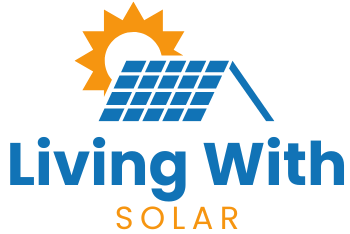As you explore the evolution of solar technology, you’ll find a fascinating journey from ancient methods to cutting-edge innovations. The progression from simple solar heating techniques to sophisticated photovoltaic systems has revolutionized how we harness sunlight for energy. But what lies ahead in the realm of solar technology? The possibilities for further advancements seem endless, with ongoing research and development paving the way for a future where solar power could play an even more prominent role in our quest for sustainable energy solutions.
Key Takeaways
- Solar technology began with magnifying glasses and mirrors, evolving to the invention of solar collectors in the 18th century.
- Early innovations included solar water heaters and solar cells, leading to increased adoption during the 1970s energy crisis.
- Modern advancements focus on improved PV cell efficiency, powerful solar panels, smart technology integration, and energy storage solutions.
- Solar technology now offers enhanced efficiency, affordability, and accessibility, driven by declining costs and innovative designs.
- Future trends include smart solar technologies, bifacial panels, perovskite solar cells, and advanced energy storage solutions for optimized performance.
“Schedule a Free Consultation” visit our website Living with solar.
Origins of Solar Technology

From ancient civilizations to modern innovations, the origins of solar technology trace back through centuries of human ingenuity and curiosity. T
he fascination with harnessing the power of the sun dates back to as early as the 7th century B.C., when magnifying glasses were used to concentrate sunlight and start fires.
Fast forward to the 3rd century B.C., and the Greeks and Romans were utilizing mirrors to light torches for religious ceremonies.
The concept of solar power continued to evolve, with the first solar collector invented in 1767 by Swiss scientist Horace-Bénédict de Saussure. This insulated box, known as the “hot box,” could reach temperatures of 230 degrees Fahrenheit by trapping solar heat.
As time progressed, so did solar technology. In the 19th century, French physicist Edmond Becquerel discovered the photovoltaic effect, laying the foundation for modern solar panels.
Early Innovations and Applications
Early innovations in solar technology paved the way for practical applications that showcased the potential of harnessing the sun’s energy.
One significant development was the invention of solar water heaters in the late 19th century, which utilized sunlight to heat water for domestic use. This marked a crucial step towards utilizing solar energy for everyday needs.
Additionally, in the 1950s, the first solar cells were created, converting sunlight into electricity through the photovoltaic effect.
These early solar cells were primarily used in space exploration, powering satellites and spacecraft.
During the 1970s energy crisis, solar technology gained momentum as a viable alternative to traditional energy sources.
Solar panels began to appear on rooftops and in remote locations where traditional power sources were impractical.
These early applications demonstrated the versatility and reliability of solar energy.
As research continued, advancements in solar technology led to improved efficiency and affordability, setting the stage for the modern solar revolution that continues to evolve today.
Modern Solar Technologies

In recent years, advancements in solar technology have propelled the industry forward at a rapid pace. Modern solar technologies have made significant strides in efficiency and accessibility.
One of the key developments is the improvement in photovoltaic (PV) cell efficiency, allowing for better conversion of sunlight into electricity.
These advances have led to sleeker and more powerful solar panels that can generate more energy in less space.
Moreover, the integration of smart technology and monitoring systems has revolutionized the way we interact with solar energy.
Homeowners can now track their energy production in real-time, optimize consumption patterns, and even sell excess energy back to the grid.
In addition, energy storage solutions like lithium-ion batteries have become more affordable and efficient, enabling households to store excess energy for use during peak hours or when sunlight isn’t available.
Advancements in Efficiency and Affordability
Solar technology has seen remarkable progress in recent years, particularly in enhancing efficiency and driving down costs.
These advancements have made solar energy more accessible and attractive to a wider audience.
Here are three key developments contributing to the increased efficiency and affordability of solar technology:
- Improved Solar Panel Efficiency: Innovations in panel design and materials have significantly boosted the efficiency of solar panels, allowing them to convert more sunlight into electricity. Higher efficiency means more power can be generated from the same amount of sunlight, maximizing energy production.
- Declining Costs of Solar Components: The cost of solar panels, inverters, and other system components has been steadily decreasing due to technological advancements, economies of scale, and increased competition among manufacturers. Lower equipment costs make solar installations more cost-effective for homeowners and businesses.
- Advancements in Energy Storage: The development of more efficient and affordable energy storage solutions, such as batteries, enables solar users to store excess energy generated during the day for use at night or during inclement weather. This enhances the overall value and reliability of solar power systems.
Emerging Trends and Technologies
Pioneering innovative technologies are reshaping the landscape of renewable energy, propelling the solar industry towards new horizons.
One emerging trend is the integration of solar power with energy storage solutions, such as advanced batteries.
This development allows for better utilization of solar energy by storing excess power for later use, even when the sun isn’t shining.
Additionally, the rise of smart solar technologies, like microinverters and power optimizers, is enhancing system performance by maximizing energy production at the individual solar panel level.
Another significant advancement is the increased adoption of bifacial solar panels, which can capture sunlight from both the front and back sides, boosting overall efficiency.
Moreover, the use of perovskite solar cells shows promise for higher efficiency rates and lower production costs. These cells can be integrated into various surfaces, expanding the possibilities for solar energy generation.
The Future of Solar Energy
The horizon of solar energy is brimming with exciting possibilities as technological advancements continue to drive the industry forward.
As you look ahead to the future of solar energy, here are three key trends to keep an eye on:
- Increased Efficiency: Innovations in solar panel design and materials are enhancing efficiency levels, allowing for more energy production from the same amount of sunlight.
This increased efficiency not only improves the overall performance of solar systems but also makes them more cost-effective for consumers.
- Energy Storage Solutions: The development of better energy storage technologies, such as advanced batteries and grid-scale storage systems, is poised to revolutionize the solar energy sector.
These solutions will enable solar power to be available even when the sun isn’t shining, ensuring a more reliable and stable energy supply.
- Smart Integration and Digitalization: The integration of smart technologies and digital solutions into solar energy systems is paving the way for improved monitoring, control, and optimization of solar installations.
This trend towards smart integration enhances system performance, increases flexibility, and ultimately makes solar energy more accessible and user-friendly.
Frequently Asked Questions
Can Solar Technology Work in Areas With Limited Sunlight?
Yes, solar technology can work in areas with limited sunlight. While efficiency may vary, advancements like concentrated solar power and hybrid systems can optimize energy production. Consider location, technology, and storage options for optimal results.
How Does Solar Technology Impact Wildlife and Ecosystems?
Solar technology, when improperly placed, can disrupt wildlife habitats and ecosystems. Bright lights and reflective surfaces can confuse birds, while large installations may disturb natural landscapes. Proper planning and regulation are crucial for minimizing negative impacts.
What Are the Environmental Impacts of Solar Panel Disposal?
When you dispose of solar panels, ensure proper recycling to prevent environmental harm. Panels contain toxic materials like lead and cadmium. Recycling reduces landfill waste and prevents leaching of harmful substances into soil and water sources.
Are There Any Cultural or Societal Barriers to Adopting Solar Technology?
You might face cultural or societal barriers to adopting solar technology. Lack of awareness, upfront costs, and aesthetic concerns could deter some. Overcoming these obstacles through education, incentives, and design integration can foster wider acceptance and usage.
How Do Solar Panels Perform in Extreme Weather Conditions?
Solar panels are durable and can withstand extreme weather conditions like snow, rain, and high winds. They may produce less energy during severe weather but are designed to handle such situations, ensuring reliable performance.
Conclusion
In conclusion, the evolution of solar technology has come a long way, from ancient practices to cutting-edge innovations. With advancements in efficiency and affordability, solar energy is becoming a more accessible and sustainable power source. Emerging trends and technologies are shaping the future of solar energy, promising even greater efficiency and accessibility. The journey of solar technology continues to progress, paving the way for a brighter and more sustainable future.




